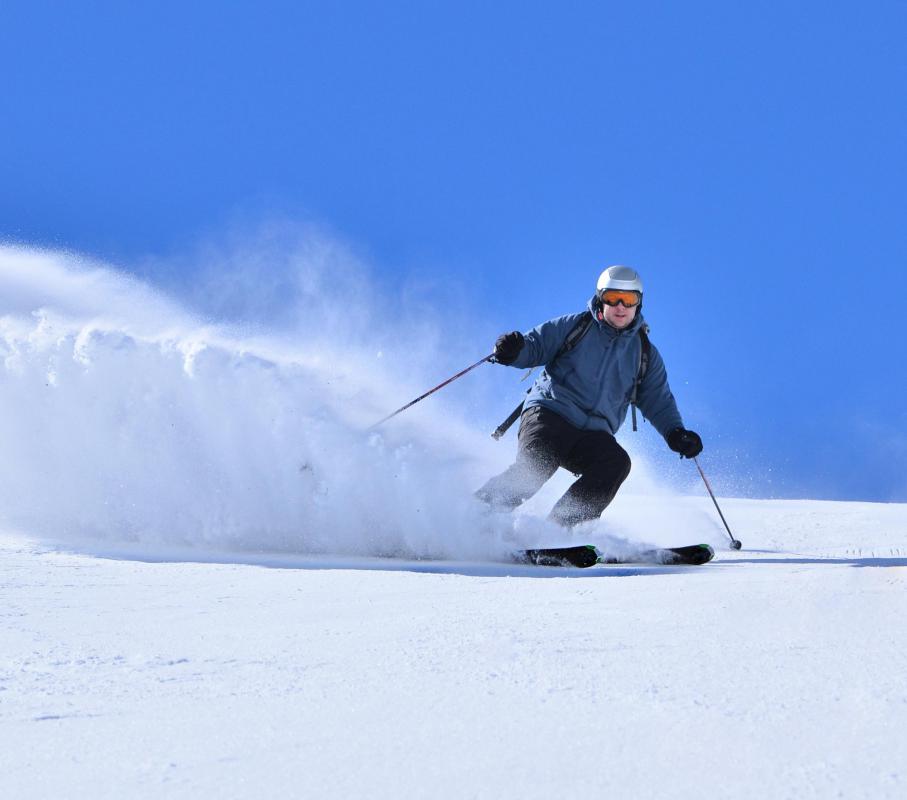At AllThingsNature, we're committed to delivering accurate, trustworthy information. Our expert-authored content is rigorously fact-checked and sourced from credible authorities. Discover how we uphold the highest standards in providing you with reliable knowledge.
What are Blizzards?
Blizzards are extremely hazardous weather events characterized primarily by heavy snowfalls, high winds, cold temperatures and near-zero visibility. If a Category 1 hurricane were to suddenly appear over the Midwestern United States in January, the results would be very similar to a blizzard. Some blizzards are so severe and so memorable that they become part of weather history. A particularly devastating blizzard that formed over the Great Lakes area in 1978, for example, is still called the "Great Blizzard of 1978." Similar blizzards in 1977 and 1993 are also considered to be "Storms of the Century."
While different countries use different criteria to define blizzards, in general, the storm system must a reach certain level of intensity to differentiate a blizzard from a general winter storm. One such criterion is wind speed. The sustained wind speeds in genuine blizzards exceed 35 mph (approximately 53 kph). This is the equivalent of a tropical depression or a minimal tropical storm in warmer climates. During the Blizzard of 1978, sustained winds of 100 mph (approximately 161 kph) were recorded in Ohio, along with a record low barometric pressure of 28.28 inches (71.83 cm).

Another distinctive element of blizzards is reduced visibility. Although visibility criteria changes slightly from country to country, visibility during blizzards is often reduced to less than 1/4 mile (400 meters) for hours at a time. During an intensification called a white-out, visibility may be reduced to near-zero. While covering the Blizzard of 1978, a Cleveland-based television news crew became trapped in such a white-out while broadcasting a live report. Blizzards contain heavy amounts of dry white snow, which tends to form loosely-packed drifts.

Cold temperatures are not always required to qualify severe winter storms as official blizzards, but in certain countries, the wind chill factor must fall below -13°F (-25°C). Even if the ambient air temperature approaches 32°F (0°C), the high winds found in blizzards can reduce the wind chill factor to bitterly cold levels. High winds can also create very large snow drifts, which bury houses and cars within minutes. The landscape following a blizzard often resembles a featureless sand dune, with large snowdrifts surrounded by thin patches of frozen ground.

Blizzards tend to form in regions known for turbulent weather systems and harsh winters, such as the northeastern United States or portions of Canada, but a few have been known to form in surprising locations. The Blizzard of 1993, for instance, affected areas as far south as Alabama and Florida. As a rule, however, most blizzards in the United States form in the Great Lakes region or the eastern Atlantic Seaboard region. A strong storm front known as an Alberta Clipper triggers blizzards in the Great Lakes, while powerful storms called Nor'easters generate blizzard conditions in the northeastern United States.
Frequently Asked Questions
What defines a blizzard?
A blizzard is a severe snowstorm characterized by strong sustained winds of at least 35 mph and lasting for a prolonged period—typically three hours or more. Visibility during a blizzard is reduced to less than a quarter-mile due to the blowing snow, making travel and outdoor activities extremely dangerous.
How do blizzards form?
Blizzards form when a region's atmospheric conditions, such as low-pressure systems, collide with cold air masses. The temperature difference between the warm and cold air masses causes moisture to rise and form clouds, which then produce snow. The strong winds associated with the low-pressure system whip this snow into a blinding, swirling storm.
What are the dangers of blizzards?
Blizzards pose significant risks including hypothermia, frostbite, and car accidents due to poor visibility and slippery roads. They can also lead to power outages, loss of communication, and structural damage. The severe weather conditions can trap individuals in their homes or vehicles, sometimes for days, creating life-threatening situations.
Can blizzards be predicted?
Yes, meteorologists can predict blizzards by monitoring weather patterns and atmospheric conditions. Advances in technology allow for the tracking of storm systems and the issuance of warnings days in advance. However, the exact severity and snowfall amounts can still be challenging to forecast accurately.
What regions are most affected by blizzards?
Blizzards are most common in regions that experience cold temperatures and have the necessary atmospheric conditions for snowstorms. These include the northern United States, Canada, northern Europe, and Russia. Mountainous areas are also prone to blizzards due to their elevation and the presence of moist air masses.
How can people prepare for a blizzard?
Preparation for a blizzard includes stocking up on food, water, and emergency supplies, ensuring adequate heating and insulation in the home, and having a battery-powered radio for updates. It's also important to have a plan for communication and an emergency kit in case of power outages or if travel becomes necessary during the storm.
AS FEATURED ON:
AS FEATURED ON:













Discussion Comments
i find this website to be very interesting.
what about North and South Dakota? Wyoming? Montana? Lived in North Dakota for eight years and was definitely in more than a couple of blizzards for sure!
I was really impressed by this story.
I was in Ohio during the blizzard of "78.
This website was very helpful. I have a report and it answered a lot of questions while having other information that I could look into for further research.
this website wuz extremely helpful. i wuz doing research 4 my report and this web answered most of my questions.
Post your comments